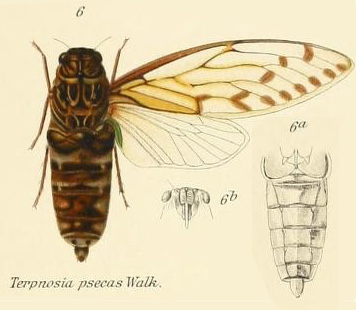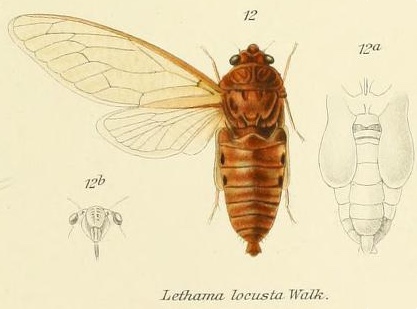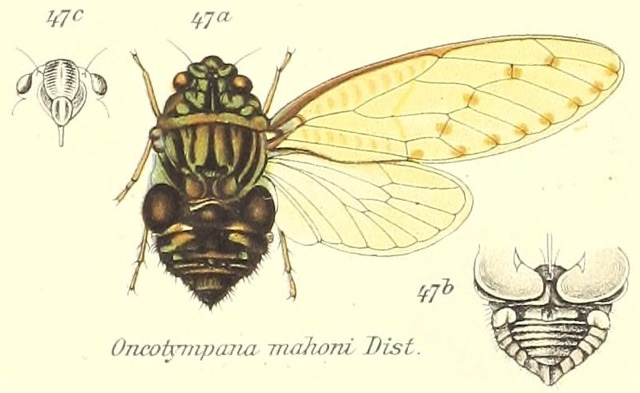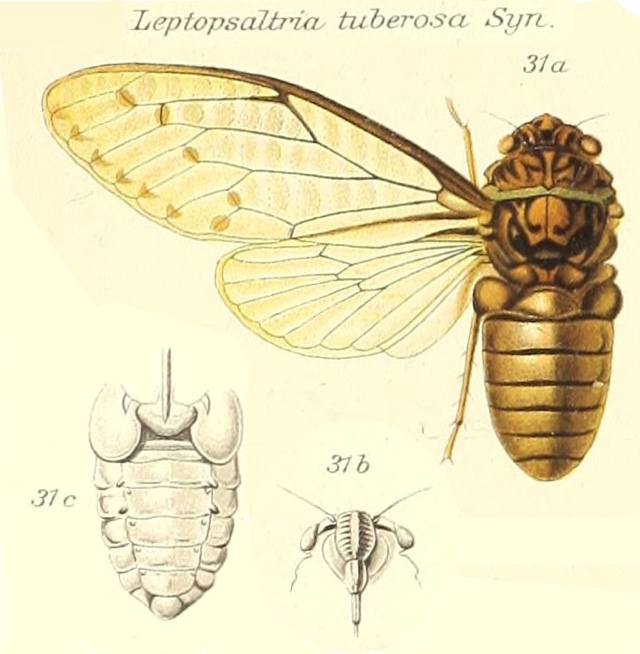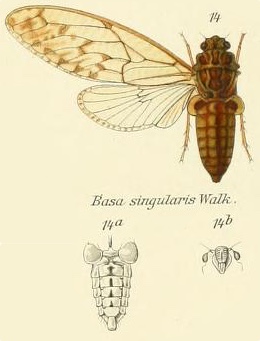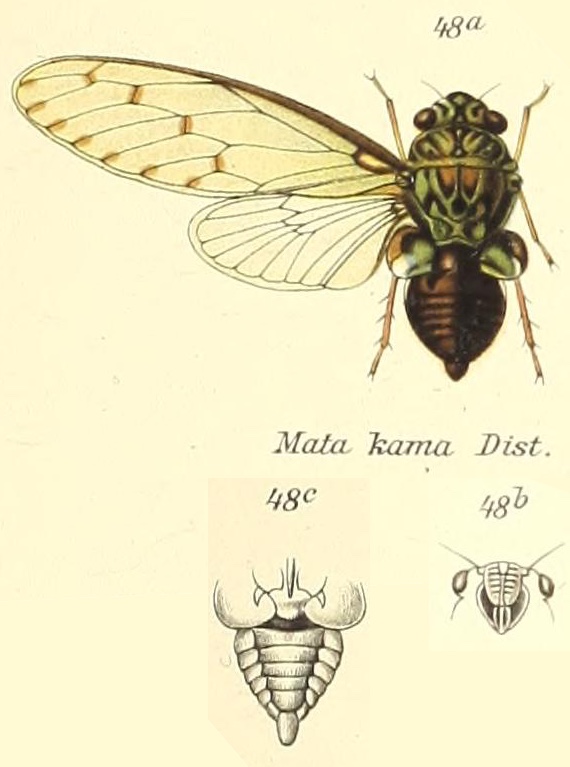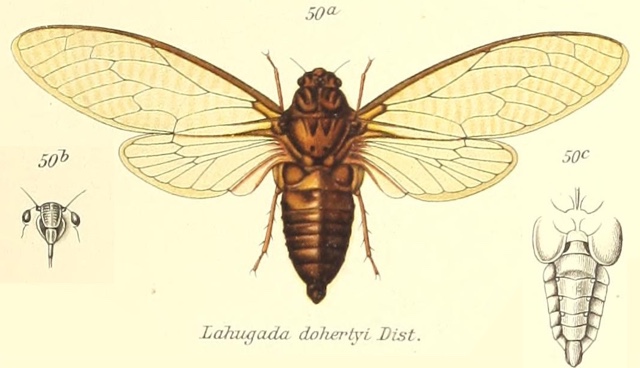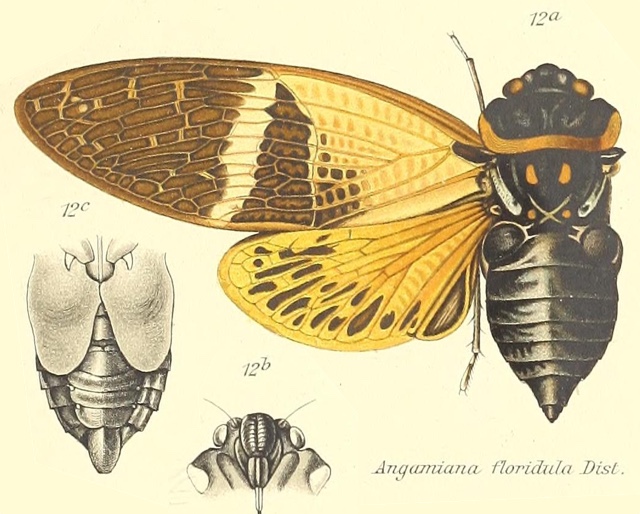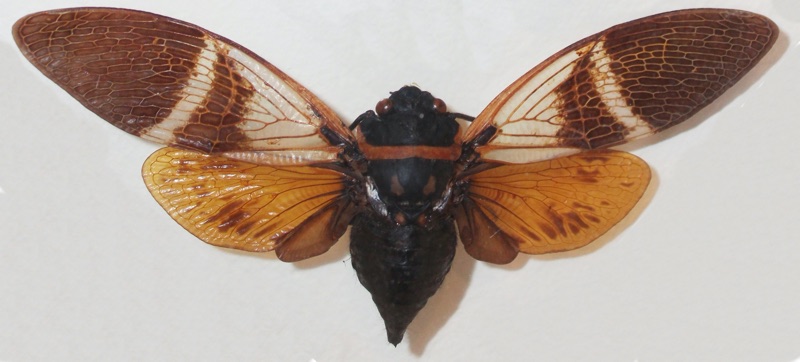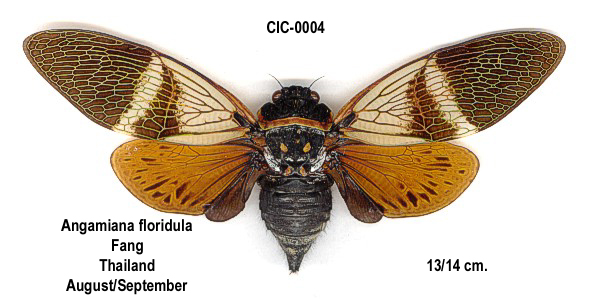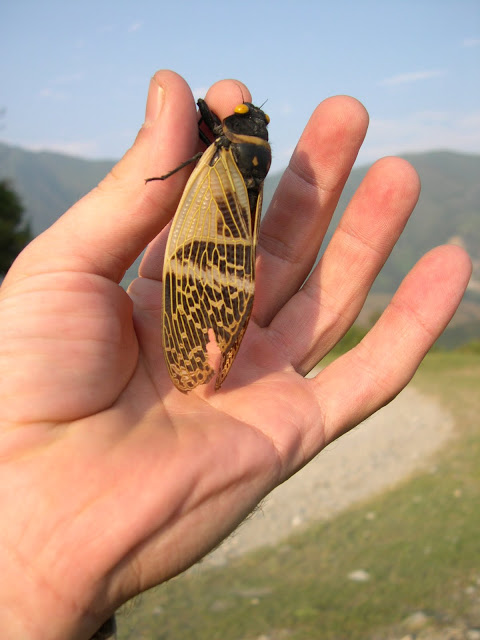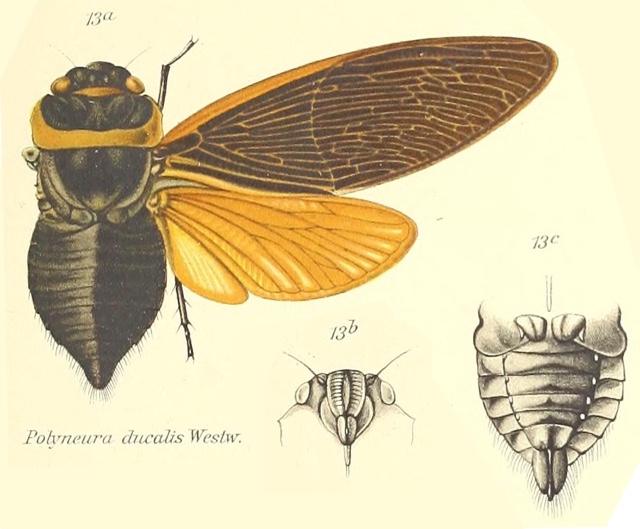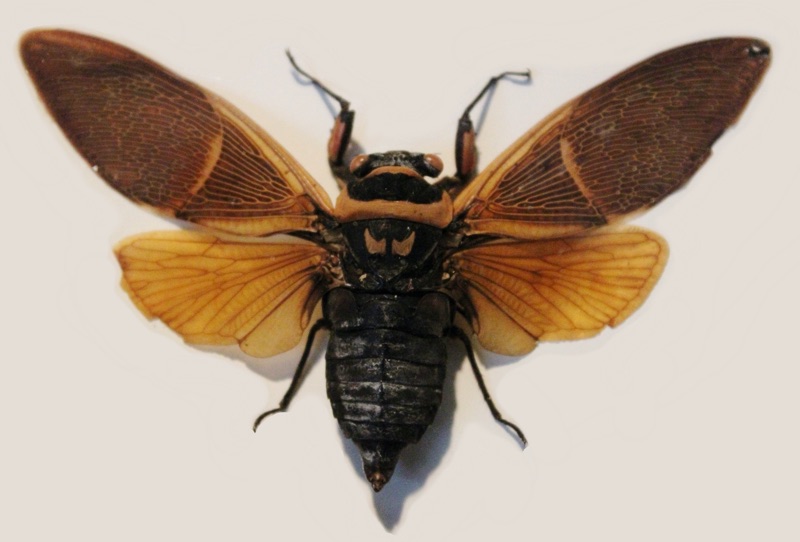Angamiana aetherea Distant, 1890 is a cicada found in India.
Scientific classification:
Family: Cicadidae
Subfamily: Cicadinae
Tribe: Polyneurini
SubTribe: Polyneurina
Genus: Angamiana
Species: Angamiana aetherea Distant, 1890
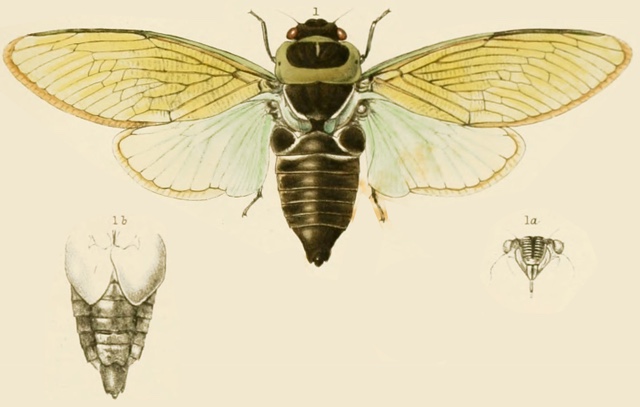
Species description from A Monograph of Oriental Cicadas by W.L. Distant:
Body black; eyes castaneous; anterior, lateral, and posterior margins of pronotum (the first narrowly), and an abbreviated, central, narrow, longitudinal fascia to same, posterior margin of metanotum, head beneath (excluding face), sternum and opercula pale greenish-ochraceous; legs and rostrum black. Body more or less clothed with greyish pile, especially at the lateral margins of the mesonotum and the base and segmental margins of the abdomen.
Tegmina semihyaline and of a pale shining bronzy hue, the venation darker and either ochraceous or greenish, the costal membrane pale greenish; the extreme base and the veins enclosing the postcostal area black; the veins enclosing the two uppermost apical areas, the terminal vein of the lower ulnar area, and the outer margin dark bronzy. Wings pale bluish-green, becoming pale bronzy towards apex, the outer margin dark bronzy.
The opercula are broad and divergent, their outer margins convex, their inner margins oblique, their apices obtusely angulated and not reaching the middle of the abdomen. The rostrum about reaches the posterior coxae.
References:
- The illustration, description and location information comes from A Monograph of Oriental Cicadas by W. L. Distant. 1889-1892. Read it on the Biodiversity Heritage Library website.
- Species name information comes from Allen Sanborn’s Catalogue of the Cicadoidea (Hemiptera: Auchenorrhyncha).
